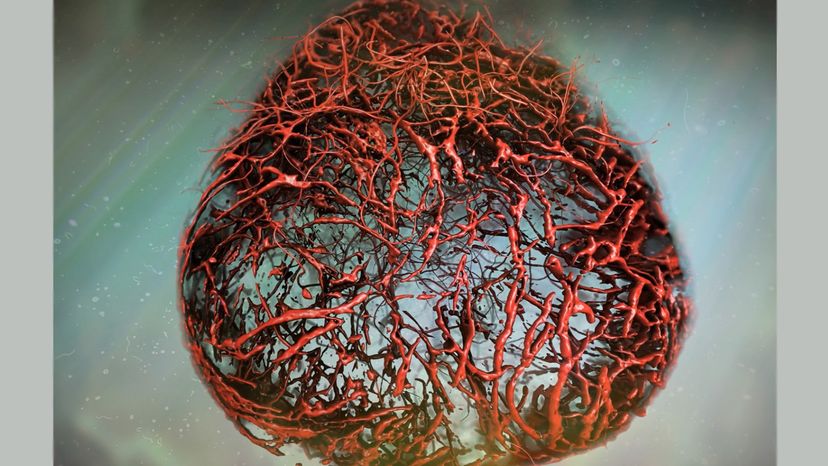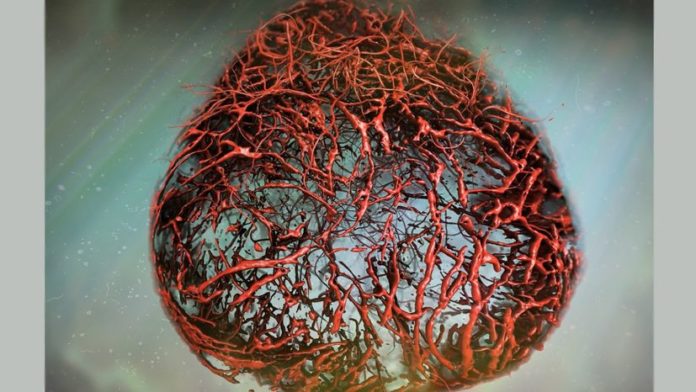 “This illustration shows what the vascular organoids, lab-made human blood vessels, might look like, based on original data. IMBA
“This illustration shows what the vascular organoids, lab-made human blood vessels, might look like, based on original data. IMBA
It’s a medical breakthrough that could dramatically shift how doctors treat diabetes, Alzheimer’s disease, cardiovascular problems, cancer and other deadly diseases, researchers say. For the first time, scientists have grown human blood vessels as organoids in a Petri dish. Organoids are tiny, 3D tissue cultures derived from stem cells that can replicate much of the complexity of an organ. The findings were published Jan. 16, 2019, in the journal Nature.
The study’s senior author, Josef Penninger, calls it a "game changer" for people with diabetes, as it could lead to new treatments to prevent changes in blood vessels, a common cause of death and morbidity among those with the disease. Likewise, the discovery could lead to advancements in treating any disease that relies on or utilizes vascular pathways.
"Every single organ in our body is linked with the circulatory system," Penninger said in a press statement. "This could potentially allow researchers to unravel the causes and treatments for a variety of vascular diseases, from Alzheimer’s disease, cardiovascular diseases, wound healing problems, stroke, cancer and, of course, diabetes." Penninger is a biomedical researcher specializing in molecular immunology, and the scientific director of the Institute of Molecular Biotechnology of the Austrian Academy of Sciences (IMBA) located in Austria.
Penninger and his colleagues were trying to find causes of and treatments for symptoms of diabetes, including impaired blood circulation and oxygen supply of tissues, which can cause kidney failure, heart attacks, strokes, blindness and peripheral artery disease. Despite its prevalence, very little is known about the vascular changes seen in people with diabetes.
The scientists grew "self-organizing 3D human blood vessel organoids from pluripotent stem cells," the study authors wrote. When they transplanted the lab-blood vessels into mice, they developed into "perfectly functional human blood vessels, including arteries and capillaries," according to the press statement. (Pluripotent stem cells are self-replicating and produce all cells of the tissues of the body.) In other words, the "vascular organoids" mimiced the structure and function of real human blood vessels, allowing them to be tested on.
"What is so exciting about our work is that we were successful in making real human blood vessels out of stem cells," Reiner Wimmer, a study author said via press release. "Our organoids resemble human capillaries to a great extent, even on a molecular level, and we can now use them to study blood vessel diseases directly on human tissue."
In fact, the study’s authors said the research has already led to the discovery of a type of enzyme in the body that prevents the thickening of blood vessel walls — a major symptom of diabetes — in animal models. Underlying causes of vascular diseases could also be studied, perhaps leading to treatment or prevention, according to the study.
Now That’s Scary
According to the World Health Organization, the number of people with diabetes has increased from 108 million in 1980 to 422 million in 2014. And in the United States alone it cost $327 billion to treat people with diabetes in 2017.










































